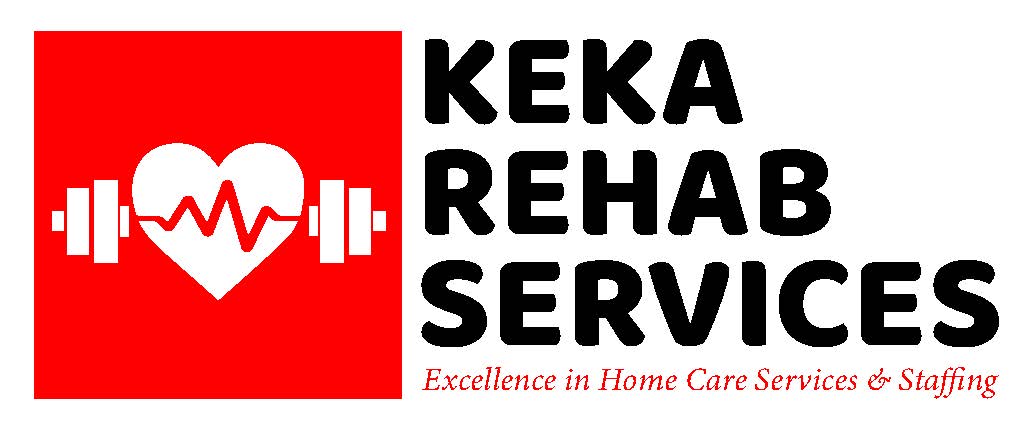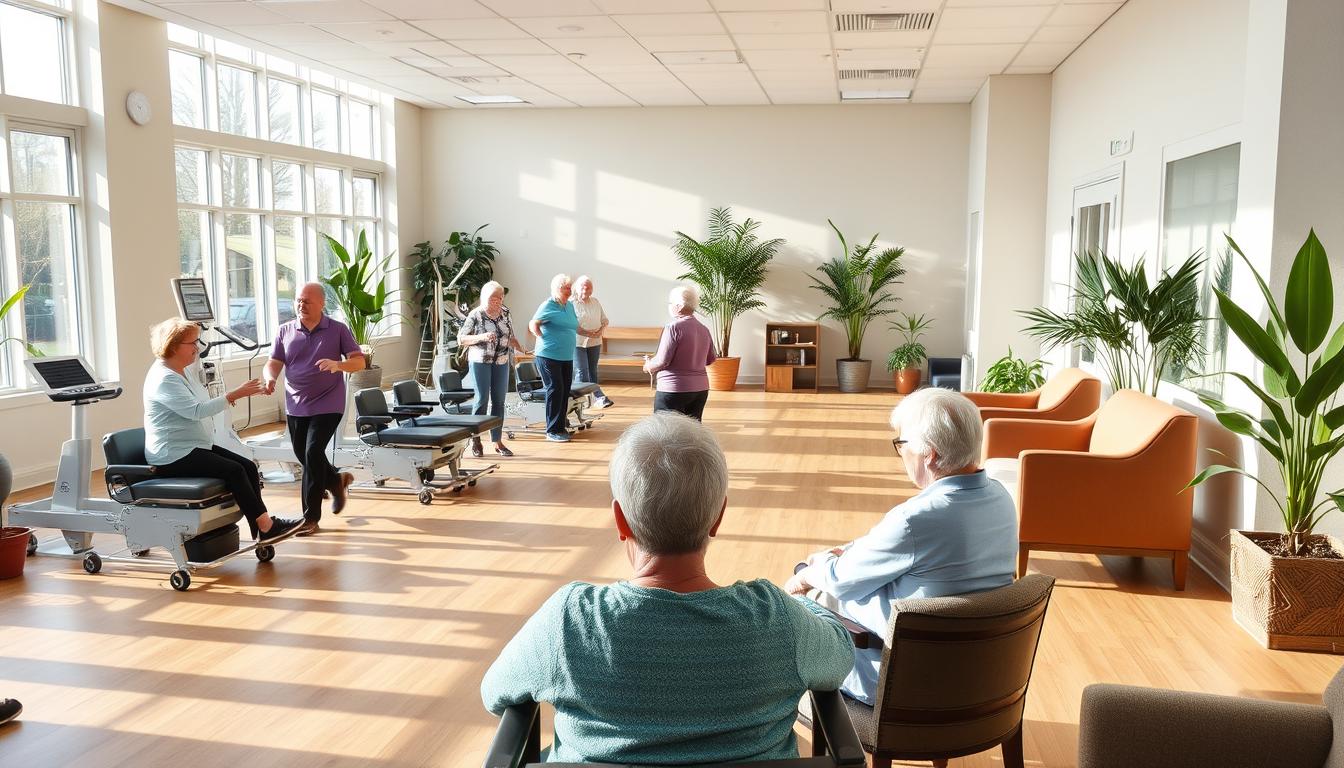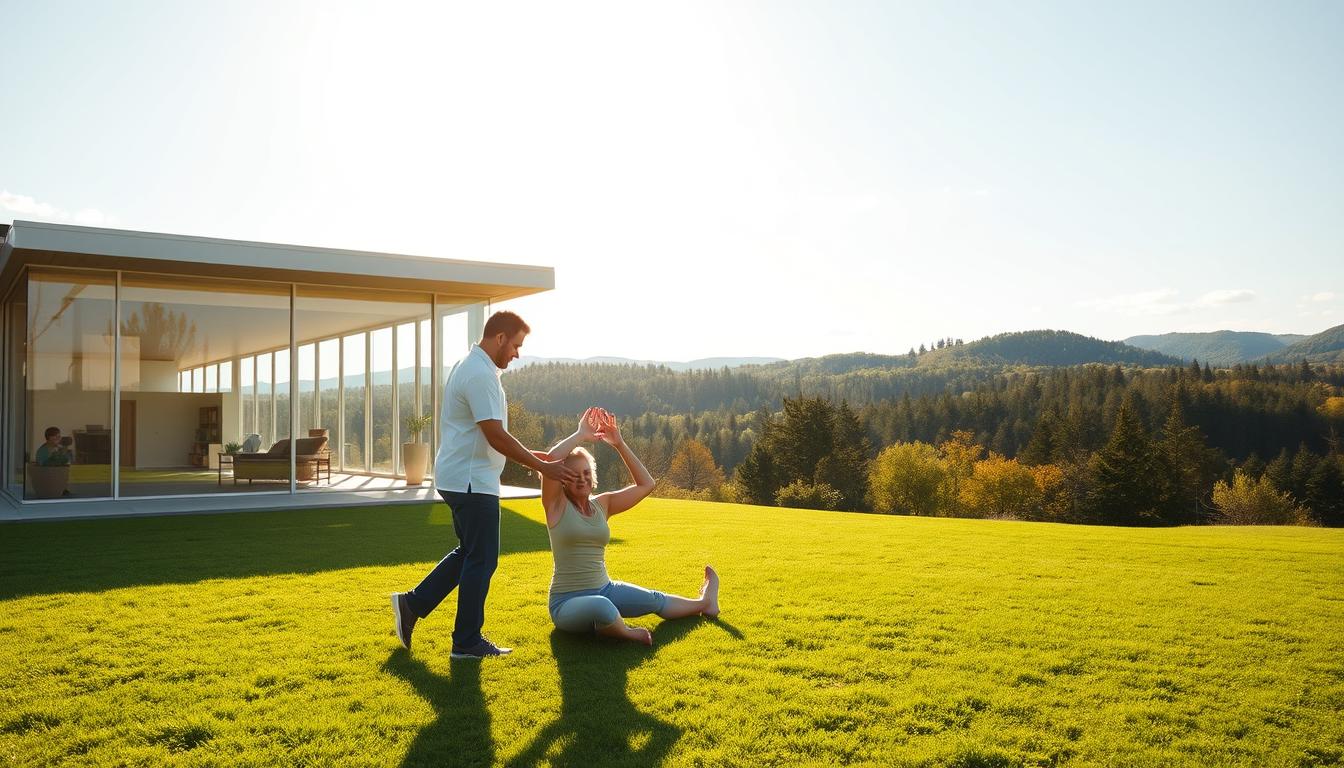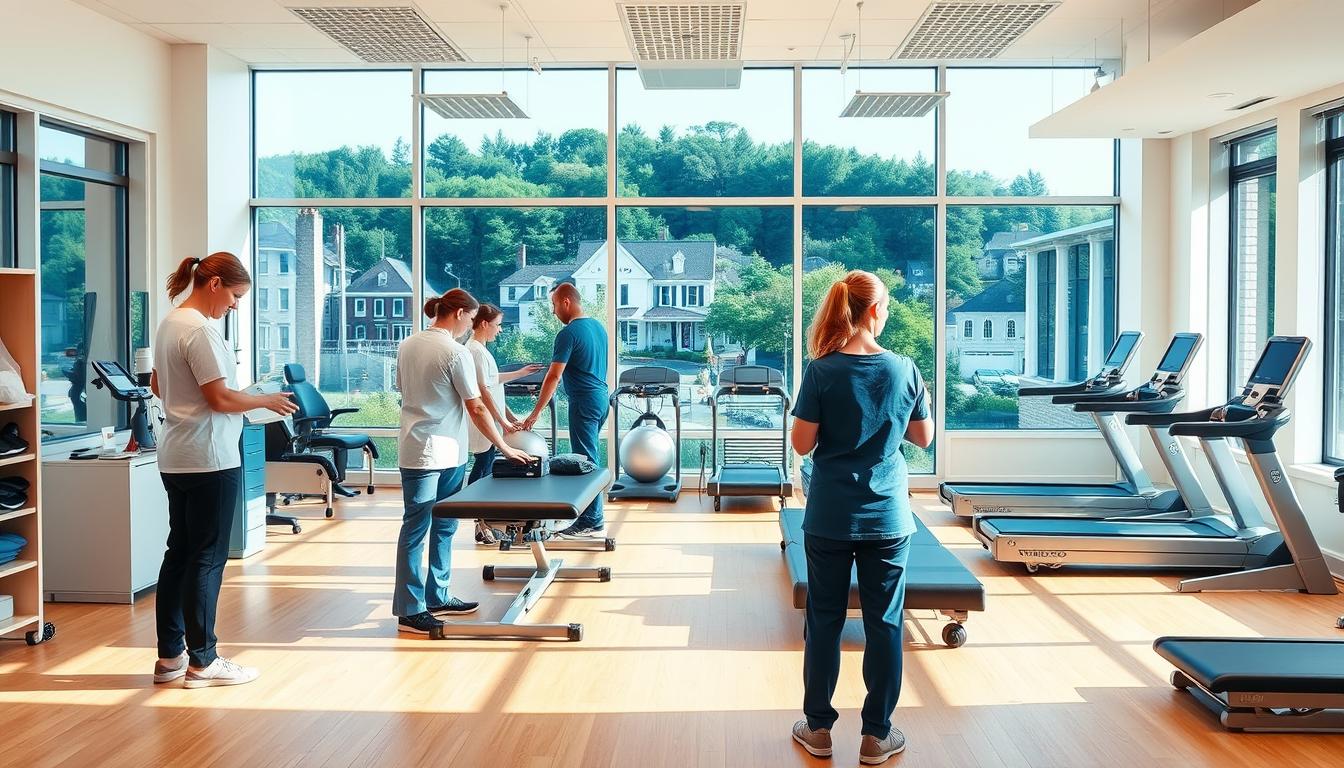As we get older, keeping our independence is key. Senior rehabilitation programs help older adults stay independent. They offer special therapy and care for seniors.
These programs help seniors move better and live better. Physical therapy helps with strength, balance, and flexibility. It’s great for those who have trouble moving after a stroke.
Older adults often get joint replacements for pain and trouble moving. After surgery, they need to get better and move well again. Occupational therapy helps seniors do daily tasks on their own.
Many programs offer physical, occupational, and speech therapies. They work every day, with sessions just for each person. This way, seniors get the care they need to reach their goals.
Key Takeaways
- Senior rehabilitation programs aim to restore and maintain independence.
- Physical therapy improves strength, balance, and flexibility in older adults.
- Rehabilitation is crucial for recovery from strokes and joint replacement surgeries.
- Occupational therapy helps seniors regain skills for daily activities.
- Personalized, one-on-one therapy sessions are tailored to individual needs.
- Comprehensive programs offer various therapies up to seven days a week.
Understanding the Importance of Senior Rehabilitation
Senior rehabilitation is key for recovery after hospital stays and managing age-related disabilities. As we get older, we face more health issues and mobility problems. Let’s look at how these affect seniors and the good of rehabilitation programs.
Impact of Illness, Injury, and Aging on Mobility
Illnesses, injuries, and aging can really hurt a senior’s ability to move. Falls are a big worry, causing 87% of fractures in the elderly. After a fall, the right rehab can help 80% of seniors live on their own again.
For those recovering from strokes or surgeries, rehab is vital. It helps them get back to normal and feel less pain.
The Consequences of Sedentary Lifestyle in Older Adults
Being too still can harm older adults a lot. Without exercise, they might lose muscle, become less flexible, and fall more often. Over half of seniors who fall once might fall again in six months without rehab.
This shows why staying active and doing rehab is so important.
Benefits of Regular Physical Activity for Seniors
Exercise and rehab bring many good things to seniors. They help regain function, lessen pain, and improve how well they can move. Rehab also boosts mental and emotional health, like confidence and less stress.
Physical, occupational, and speech therapy are big parts of rehab. They cover many health areas of a senior.
Knowing how vital senior rehab is can help you make better choices for recovery and managing disabilities for yourself or loved ones.
Types of Senior Rehabilitation Programs
Senior rehabilitation programs have many options for older adults. They focus on therapy and care for the elderly. This helps keep them independent. Let’s look at the different types.
Inpatient rehabilitation is best for serious cases needing lots of treatment. Patients get at least three hours of therapy each day. They stay for up to five days a week, on average for 12.4 days.
Outpatient rehabilitation is for those who can do daily tasks on their own. It offers therapy without staying overnight. This is great for those who like to stay at home.
At-home rehabilitation lets seniors get treatment in their own homes. Home health agencies provide this care. It’s personalized and done in a comfortable place.
Senior living communities also offer rehabilitation services. They include physical, occupational, and speech therapy. These services are tailored for each senior’s needs.
Medicare Part A often covers senior rehab care. It pays 100% of costs for the first 20 days in a skilled nursing facility. Long-term care insurance and Medicaid might also help. Veterans can get services from the Department of Veterans Affairs.
Rehabilitation programs in senior living communities have three levels of care. These levels are Basic Care, Sub-Acute, and Acute Care. They make sure seniors get the right support for their needs and goals.
The LIFE Program: Living Independence for the Elderly
The LIFE program helps older Pennsylvanians live on their own. It’s been around for over 20 years.
Eligibility Criteria for LIFE
You must be 55 or older and need skilled nursing care to join LIFE. Your local County Assistance Office checks if you can pay. Or, you can pay privately.
Comprehensive Services Offered
LIFE gives many services. These include adult day health, emergency care, and in-home support. You also get therapies, medicines, and medical equipment.

Most LIFE members pay nothing if they qualify for Medicaid or both Medicaid and Medicare. This covers things like prescriptions, rides, and meals at the LIFE center.
Finding a LIFE Provider
To join LIFE, contact a LIFE Provider in your area. Or call the Pennsylvania Independent Enrollment Broker at 1-877-550-4227. LIFE is a great choice for older Pennsylvanians who want to stay independent.
Physical Therapy and Exercise in Senior Rehabilitation
Physical therapy is very important for seniors. It helps those 65 and older who lose muscle strength and balance. It makes them stronger, more flexible, and better at moving around.
Functional mobility training is a big part of senior programs. It works on muscles like legs and glutes. It helps with standing, sitting, walking, and climbing stairs. Seniors should move every day. They should do strength and balance exercises at least two times a week.
Fall prevention is key in senior care. One in five seniors over 65 falls and gets hurt. Physical therapy can make them stronger and less likely to fall.
Some common exercises for seniors include:
- Range of motion exercises
- Strengthening exercises
- Balance exercises
- Breathing exercises
These exercises help seniors get their strength and balance back. They improve how well they can move and live on their own. How long and how often they do physical therapy depends on their needs and goals.
Occupational Therapy for Seniors: Regaining Daily Living Skills
Occupational therapy helps older adults become independent again. It improves skills for daily tasks. It also makes life better and safer.
Activities of Daily Living (ADLs)
Occupational therapists help seniors with daily tasks. These include eating, bathing, and dressing. This way, seniors can live with dignity and independence.
Adaptive Equipment and Home Modifications
Therapists check the home for safety and suggest changes. They might suggest grab bars or raised toilet seats. These changes help seniors move around and do tasks easily.
Cognitive Rehabilitation Techniques
Cognitive therapy is a big part of occupational therapy. It uses memory games and training for seniors with dementia or stroke. It helps improve mental and emotional health.
Occupational therapy is available from many healthcare providers. It’s covered by Medicare for those 65 and older. It helps seniors recover, manage health, or stay independent.
Senior Rehabilitation Programs: Restoring Independence
Senior rehabilitation programs are key for recovery after being in the hospital. They help older adults get back on their feet after being sick or hurt. A big 80% of seniors face big challenges with moving, being strong, and thinking clearly.
Special care for seniors is 40% better than regular care for those getting better after surgery or dealing with long-term health issues. These programs make plans just for each person, helping 95% of them.
- Physical therapy
- Occupational therapy
- Speech therapy
- Psychological support
These services are easy to find. About 83% of places that help seniors have visiting physical therapists. 82% have occupational therapists, and 79% have speech therapists.
These programs make life better for seniors. They cut the risk of problems from not moving by 60%. They also help people meet others and have fun, helping 75% of seniors.
These programs make seniors feel more confident in 85% of them. For those needing help all the time, places that help seniors cost about $5,000 a month. 88% of them offer help for a short time.
The Role of Nutrition in Senior Rehabilitation
Nutrition is key in helping seniors get better. A good diet helps fix tissues, gives energy, and keeps them well during recovery. Health experts know that older people need different foods.
Older adults need lots of protein to fix muscles and heal wounds. Carbs and fats give the energy for the body’s repair work. Research shows that eating well and getting enough rest helps seniors get better faster.
Malnutrition is a big problem in caring for the elderly. Up to 29% of older people in care homes might not get enough nutrients. Not eating enough can make it harder for them to swallow and do daily tasks.
Healthcare teams work together to make special meal plans for each patient. They keep an eye on how well the patient is eating to help them get better faster. Good nutrition makes rehabilitation programs work better and improves seniors’ lives.
Social Engagement and Community Reintegration
Helping seniors get back into their community is key. It helps them feel independent again. They also get to connect with others, which is good for their mind and body.
Combating Social Isolation
Being alone can hurt seniors a lot. It can make them feel sad and worried. To fight this, there are special programs for seniors. These help them make friends and feel part of a group.
Group Activities and Socialization Opportunities
Places for older adults have lots of fun things to do. They might have:
- Fitness classes for seniors
- Community gardening projects
- Group outings and excursions
- Art and craft workshops
These activities keep seniors healthy and help them make friends. Studies say exercise and other help can improve their social life after a stroke.
Family Involvement in Rehabilitation
Family support is very important. Being involved helps seniors recover faster. Care services encourage family to join in therapy and activities. This makes a supportive space for seniors to grow and function better.
Assisted Living and Active Retirement Programs
More people in the U.S. are getting older. In 2020, one in six people were 65 or older. This means more need help with daily activities and long-term care.
Assisted living and active retirement programs help a lot. They offer many services for older adults. This includes help with short-term recovery and long-term care.
Many places have nice things like dining rooms, gyms, and libraries. These make life better for the people living there.
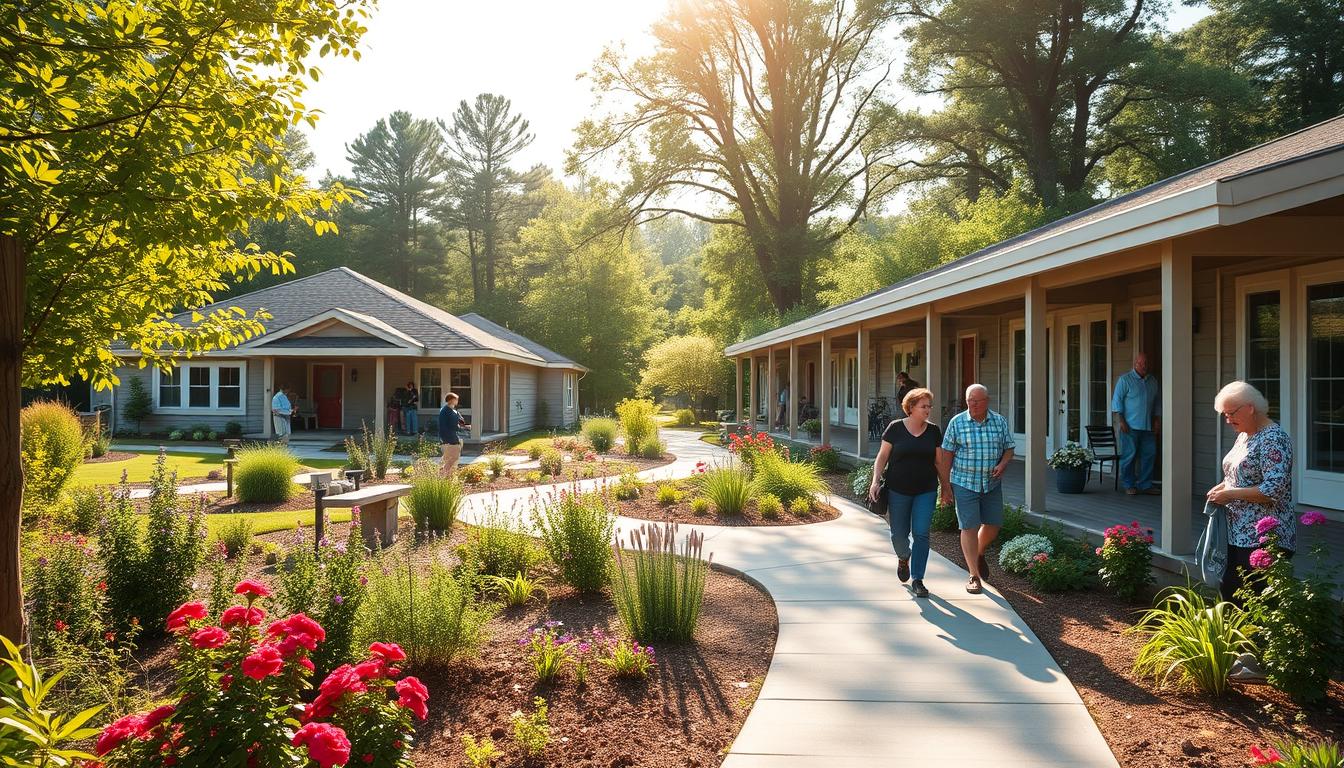
Prices for assisted living vary a lot. Some places cost $870 to $7,545 a month. Medicare doesn’t pay for these costs. But, Medicaid and its waivers might help with some expenses.
It’s important to look at money options when choosing these services.
Places like Acts Retirement-Life Communities have many options. They have 27 locations in 9 states. Acts offers many choices for active seniors.
Acts has a Life Care contract. This means a fixed monthly fee, no matter what care you need later.
When picking assisted living or active retirement, think about:
- Physical and emotional health needs
- How much independence you want
- How much social time you want
- Medical services available
- How close it is to family and friends
Looking at these things helps find the right place. It makes sure you have a good and happy life as a senior.
Fall Prevention Strategies in Senior Rehabilitation
Falls are a big problem for older adults. They are the third leading cause of chronic disability. In 2015, falls cost $51 billion. By 2030, this cost could reach $100 billion.
Senior rehabilitation programs focus on preventing falls. They also work on improving how well seniors can move.
Balance and Strength Training
Being active is key to avoiding falls. It makes seniors stronger and more balanced. Rehab programs include exercises that help with balance and strength.
These exercises work on the core, legs, and arms. They help seniors stay stable. Walking tests can also predict if someone might fall.
Home Safety Assessments
Checking the home for safety is important. Bright lights help avoid tripping on things that are hard to see. Wearing the right shoes can also prevent falls.
Putting in handrails and grab bars can help a lot. Experts say these steps are very important.
Medication Management
Some medicines, like sleeping pills and pain drugs, can make falls more likely. It’s important to review medicines often. Doctors and seniors work together to find safer options.
This, along with teaching seniors about their medicines, helps prevent falls.
